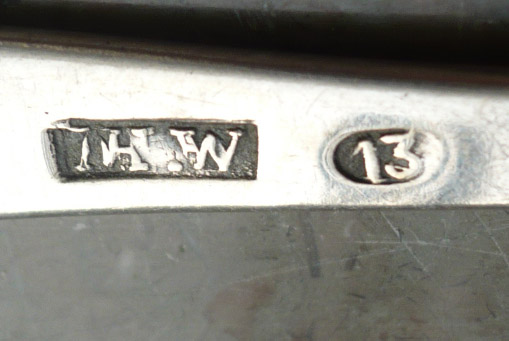Hello Hjulben
To have not sufficient patience, doesn’t change by every bodies will an object of maybe German origin to one of Denmark, or Norway, or some where.
I suggest to you — for first aid — look to:
http://www.925-1000.com/dm_menu.html" onclick="window.open(this.href);return false;
http://www.925-1000.com/Fgerman_marks.html" onclick="window.open(this.href);return false;
http://www.925-1000.com/Fnorway_marks.html" onclick="window.open(this.href);return false;
Only to understand this a little bit, to find out origin’s place, maker, time range to be made and maybe many more.
I guess your spoon could be of German origin, made in a time and place when and where guilds were closing down.
Read a little bit e.g. on Hamburg guild:
http://www.925-1000.com/forum/viewtopic.php?t=19040" onclick="window.open(this.href);return false;
From style of your spoon — lancet shape — it is a style are actual long time range, especially in 19th century.
Spoon is made from silver alloy of 13 Lot fineness (13/16 = 0.8125/1,000). This signification is also that your spoon was made in an economically normalized time (without depression or war).
Any town mark of a warden is missing. That signification is that your spoon could be made in — at least — some hundred German towns.
Maker’s mark — seem to me — is struck twice: First struck was made on one’s head, then after struck again — as it is now.
Now it would be a little bit tricky to find the silversmith with this mark: H.W (in a horizontal rectangular frame)
Maybe you start now to understand only a little bit the complexity and learn to have patience?
Kind regards silverport

